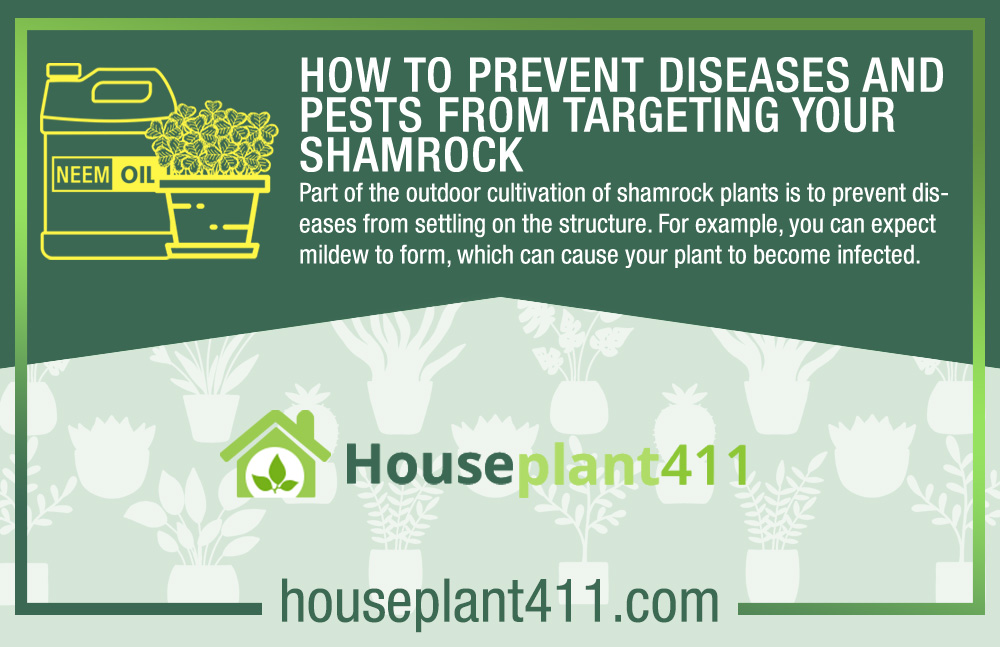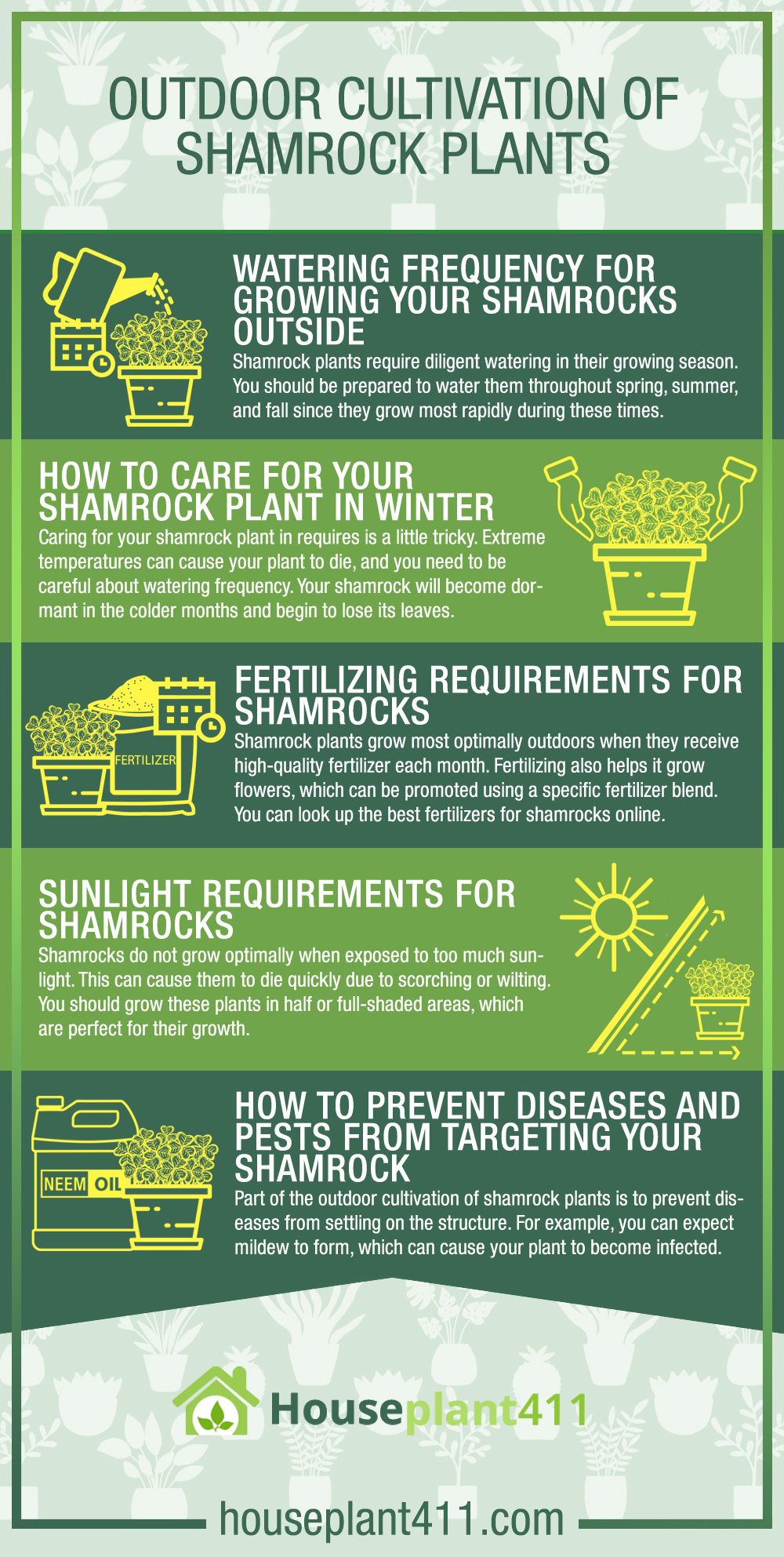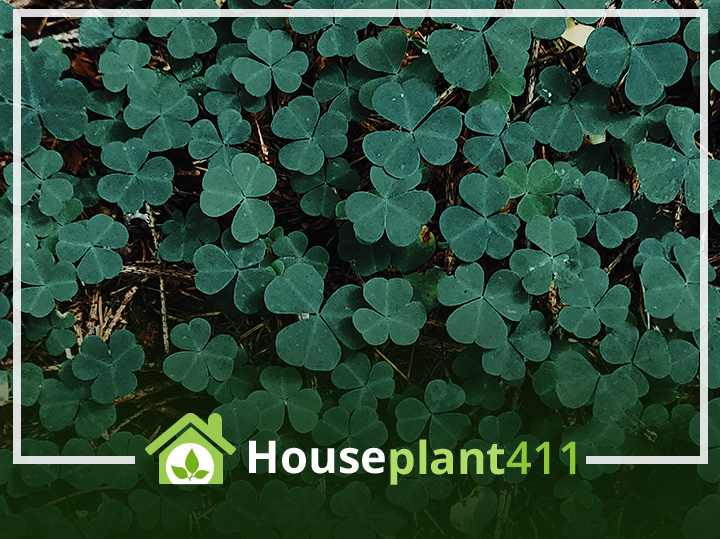It is in your best interests to avoid watering the plant altogether and wait until fresh leaves begin to grow. Some variations of the shamrock plant grow easily in the United States, meaning they can grow throughout the year in various zones. However, you must bring your plant indoors in extreme temperatures since it will not survive.
Shamrocks are closely associated with Irish culture and often denote luck. They played a role in the spread of Christianity, making them an important symbol. You can find these plants growing in many places, so understanding how to cultivate them outdoors is necessary.
Let’s explore more about the outdoor cultivation of shamrock plants.
Watering Frequency For Growing Your Shamrocks Outside
Shamrock plants require diligent watering in their growing season. You should be prepared to water them throughout spring, summer, and fall since they grow most rapidly during these times. When cultivating your shamrock outside, it helps to water each time the top layer of the soil dries out. It indicates the best watering time and prevents overwatering, which can lead to complications like root rot.
One way you can check the dryness of the top inch of the soil is by poking the surface with your finger. Additionally, you can add organic mulch to the soil to ensure adequate moisture is retained. However, it would be best not to directly water your shamrock’s stem as this may invite fungus growth.
Many people grow shamrocks in pots. These are then placed outdoors in the perfect arrangement to achieve maximum visual appeal. However, you should prevent the soil from drying out in such containers and water your plant whenever it’s drying out too quickly. One error many people make with the outdoor cultivation of shamrock plants is to keep the containers in a saucer. It causes fungus growth, potentially causing your plant to die.

How to Care For Your Shamrock Plant in Winter
Caring for your shamrock plant in requires is a little tricky. Extreme temperatures can cause your plant to die, and you need to be careful about watering frequency. Your shamrock will become dormant in the colder months and begin to lose its leaves. It is in your best interests to avoid watering the plant altogether and wait until fresh leaves begin to produce
If you experience heavy snowfall in your region, carefully mark where your shamrock is planted. It allows you to locate it during spring and prepare for its propagation. If you find any shamrock bulbs in the soil, you can dry them and plant them during the growing season.

Fertilizing Requirements For Shamrocks
Shamrock plants grow most optimally outdoors when they receive high-quality fertilizer each month. Fertilizing also helps it grow flowers, which can be promoted using a specific fertilizer blend. You can look up the best fertilizers for shamrocks online.
You should fertilize your shamrock plant every 2-3 weeks for the most optimal growth results. However, during winter, you should avoid adding fertilizer when the plant becomes dormant and begins losing its leaves.

Sunlight Requirements For Shamrocks
Shamrocks do not grow optimally when exposed to too much sunlight. This can cause them to die quickly due to scorching or wilting. You should grow these plants in half or full-shaded areas, which are perfect for their growth. They thrive in indirect sunlight and grow most quickly outside its direct rays. However, there is nothing wrong with receiving morning sun, meaning you can plant your shamrocks under larger plants or trees providing shade.
Some care must be taken during the outdoor cultivation of shamrock plants. Since these plants contain oxalic acid, you should ensure that your children do not consume them when playing outside. The same applies to pets since oxalic acid can be fairly toxic.

How to Prevent Diseases and Pests From Targeting Your Shamrock
Part of the outdoor cultivation of shamrock plants is to prevent diseases from settling on the structure. For example, you can expect mildew to form, which can cause your plant to become infected. However, this is easily mitigated by planting your shamrocks in areas with excellent air circulation.
If your shamrocks grow in pots, keep them away from other containers. If you’re growing your shamrocks in the ground, keep a minimum space of at least one foot between plants. A tip to prevent mildew from forming is to water near the plant’s base, which does not retain moisture and attract mildew.
Shamrocks are resilient to pests when grown outdoors. You can expect many insects to visit the plants, which you can control using neem oil, an organic pesticide. You may also deter these insects from targeting your shamrocks by attaching sticky traps near the plant, preventing insects from laying eggs on your shamrocks.
Spider mites are quite difficult to deal with. However, you can target them with neem oil and use your garden hose to dislodge and kill them.


Final Verdict
Outdoor cultivation of shamrock plants is possible by following the growing tips laid out in this article. If you provide optimal growth conditions for your shamrocks, they will grow beautifully in your garden. However, they require some care, and you should be willing to put in the time and effort to look after them properly.
Winters can be difficult for shamrocks, causing them to lose all their leaves. However, this dormancy period is to be expected, and you may wish to bring your plants indoors for the colder months.

